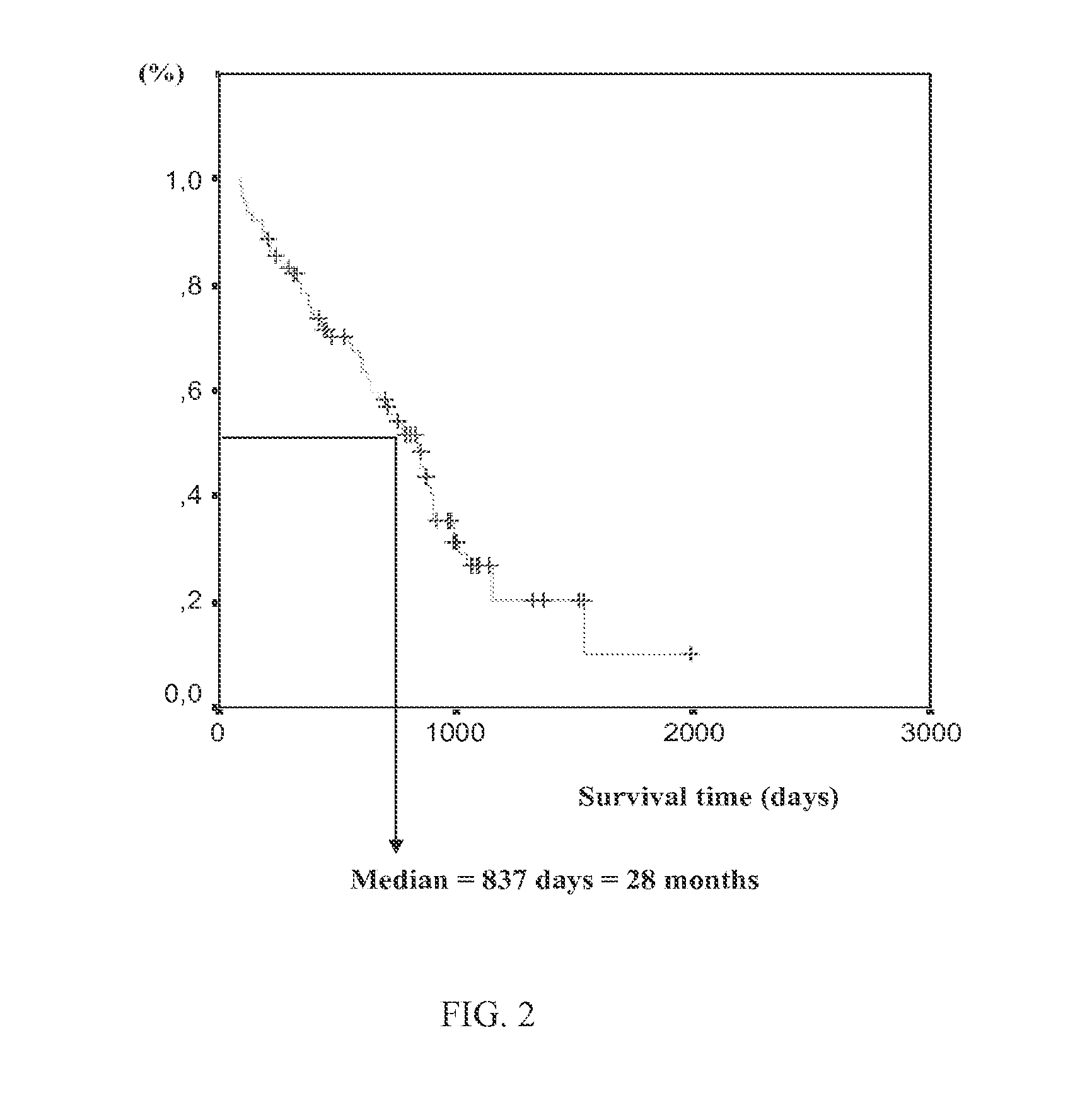Individual 5-fluorouracile dose optimization in folfiri treatment
a technology of individual fluorouracile and dose optimization, which is applied in the direction of antibody ingredients, biochemistry apparatus and processes, organic active ingredients, etc., can solve the problems of serious adverse reactions, worse adverse effects, and deleterious effects of most drugs
- Summary
- Abstract
- Description
- Claims
- Application Information
AI Technical Summary
Benefits of technology
Problems solved by technology
Method used
Image
Examples
example 1
Analysis in Patients Treated with a FOLFIRI Regimen
[0132]The present study included patients treated by a FOLFIRI regimen and aimed to determine genetic and pharmacokinetic factors to tailor 5-FU and irinotecan administrations and determine the impact of individual dose-adjustment in first-line chemotherapy of advanced colorectal cancer.
[0133]Genetic factors studied for 5-FU included:[0134]the double polymorphism of TS (Thymidylate synthase), i.e. a 28-base pair tandem repeat sequence within the 5′-untranslated region with a single nucleotide polymorphism (SNP): the presence of a triple repeat (3R) instead of a double repeat (2R) either in heterozygous (2R / 3R) or homozygous (3R / 3R) configuration has been suggested to increase TS expression and consequently 5-FU sensitivity, thus resulting in potential increased 5-FU efficiency and increased risk of developing toxicities dues to 5-FU administration.[0135]DPD (dihydropyrimidine deshydrogenase) SNPs (IVS 14+1G>A, 2846 A>T, 1679 T>G and...
example 2
Analysis in Patients Treated with a FOLFIRI+Cetuximab Regimen
[0198]Patients and Methods
[0199]Patients
[0200]90 patients under 80 years with a metastatic colorectal adenocarcinoma in 2nd then amended to 1st line chemotherapy (jul 2007), PS≦2, normal organ function. No total DPD deficiency.
[0201]Treatment
[0202]Cetuximab: standard dose (400 mg / m2D1) then 250 mg / m2 weekly.
[0203]After 200 mg / m2 of intravenous leucovorin bolus and 400 mg / m2 of intravenous push of 5-FU for 10 minutes, 5-FU was administered with an initial dose of 2,500 mg / m2 (+ / −10%, i.e. 2200-2800 mg / m2) every two weeks for 46-hours through a battery-operated pump, except in case of 5-FU increased sensitivity, in which case the initial dose of 5-FU in 46 hours continuous infusion was decreased by 50%. In an old patient without observed increased 5-FU sensitivity, the clinician decided to decrease 5-FU dose despite absence of observed increased 5-FU sensitivity.
[0204]The 5-FU dose in 46 hours continuous infusion was then ta...
PUM
| Property | Measurement | Unit |
|---|---|---|
| time | aaaaa | aaaaa |
| concentration | aaaaa | aaaaa |
| concentrations | aaaaa | aaaaa |
Abstract
Description
Claims
Application Information
 Login to View More
Login to View More - R&D
- Intellectual Property
- Life Sciences
- Materials
- Tech Scout
- Unparalleled Data Quality
- Higher Quality Content
- 60% Fewer Hallucinations
Browse by: Latest US Patents, China's latest patents, Technical Efficacy Thesaurus, Application Domain, Technology Topic, Popular Technical Reports.
© 2025 PatSnap. All rights reserved.Legal|Privacy policy|Modern Slavery Act Transparency Statement|Sitemap|About US| Contact US: help@patsnap.com


